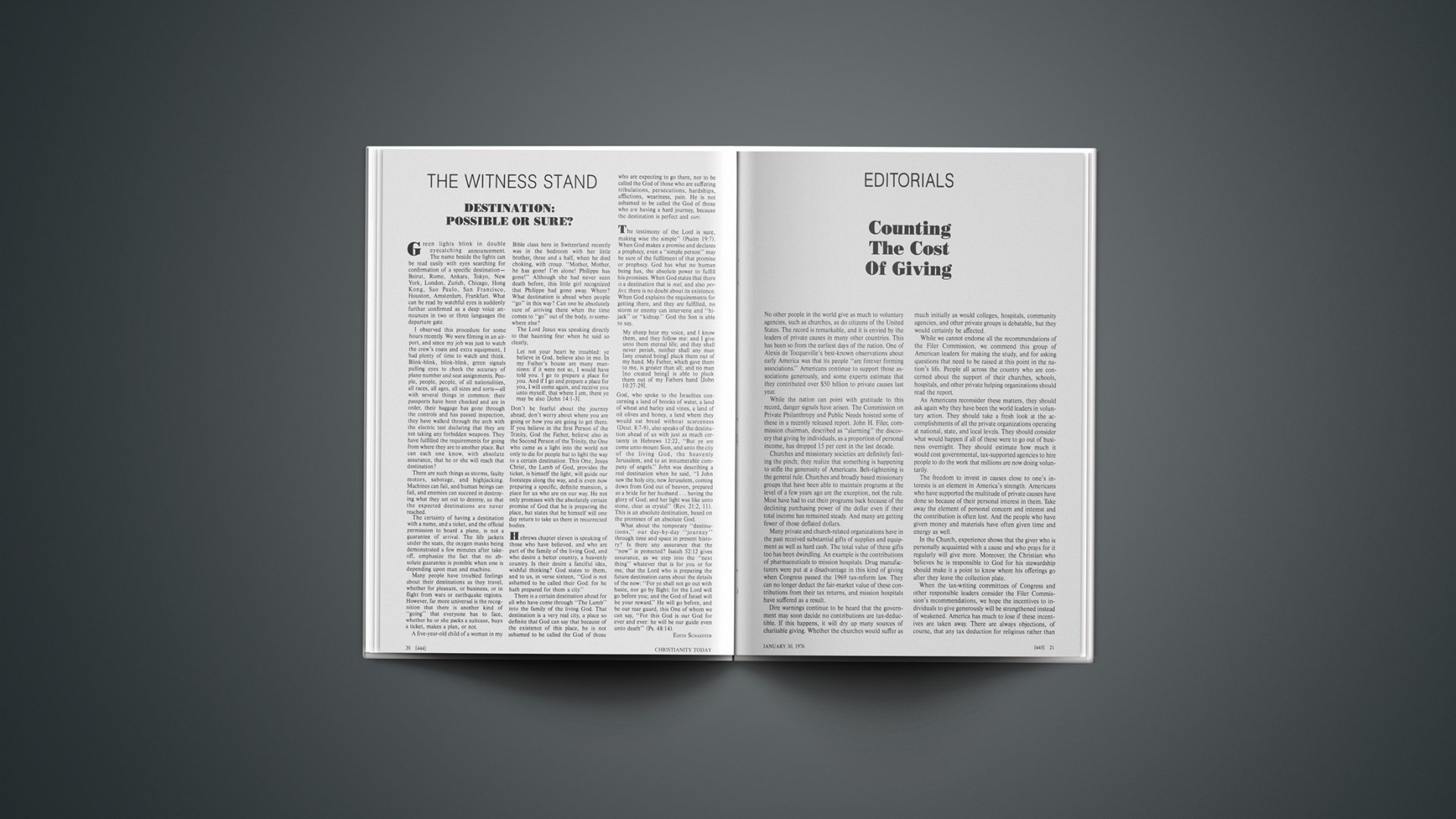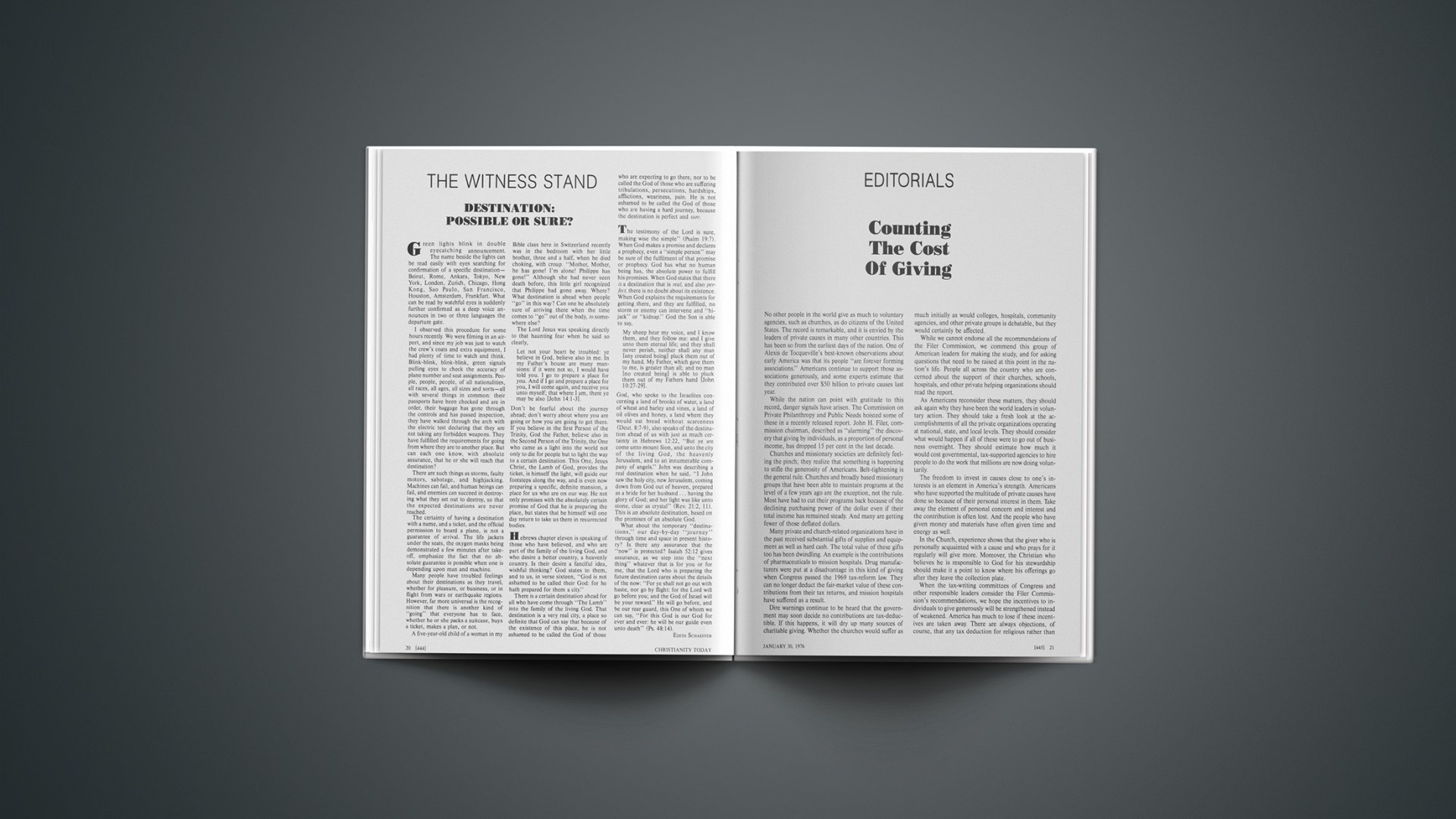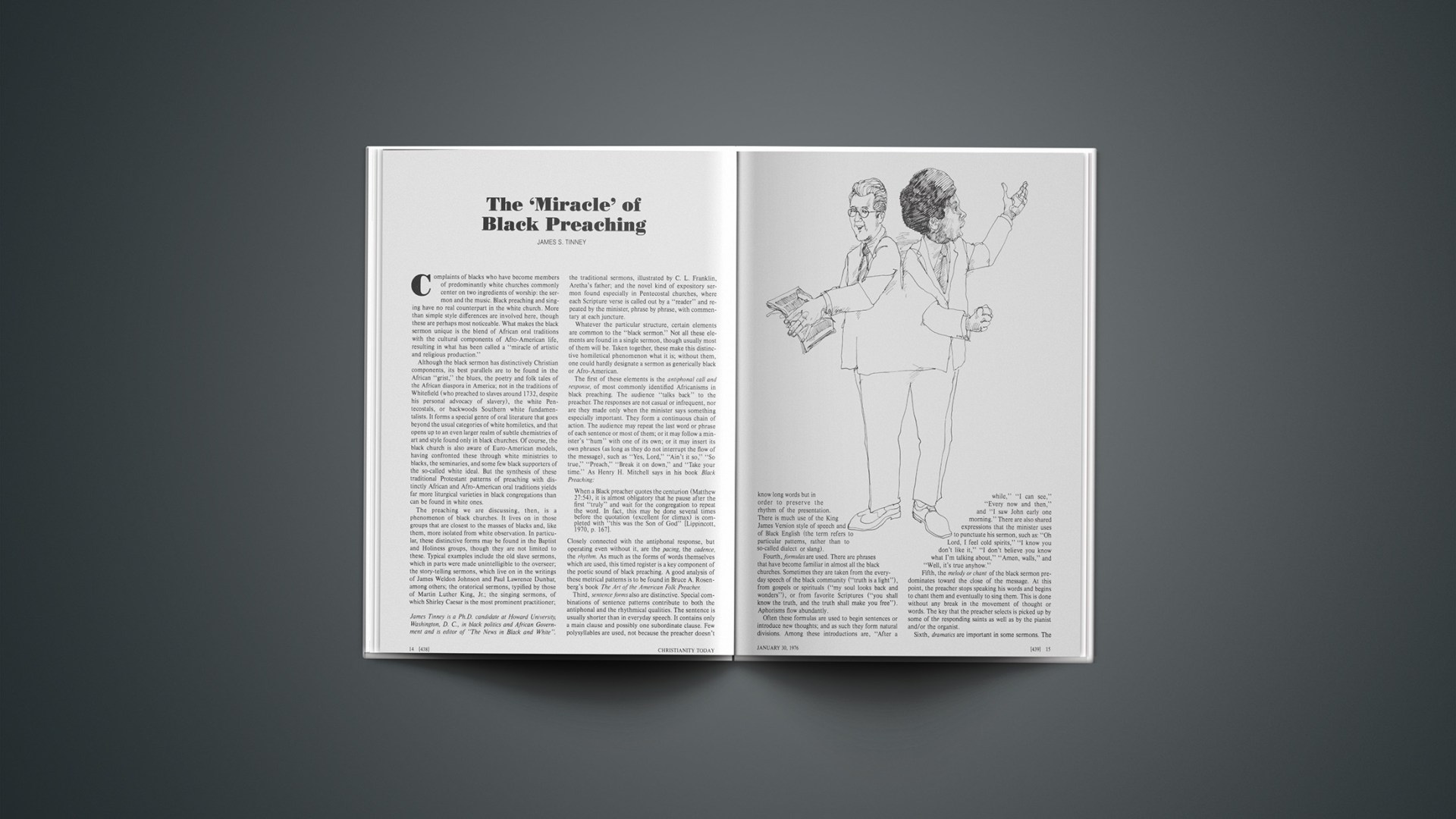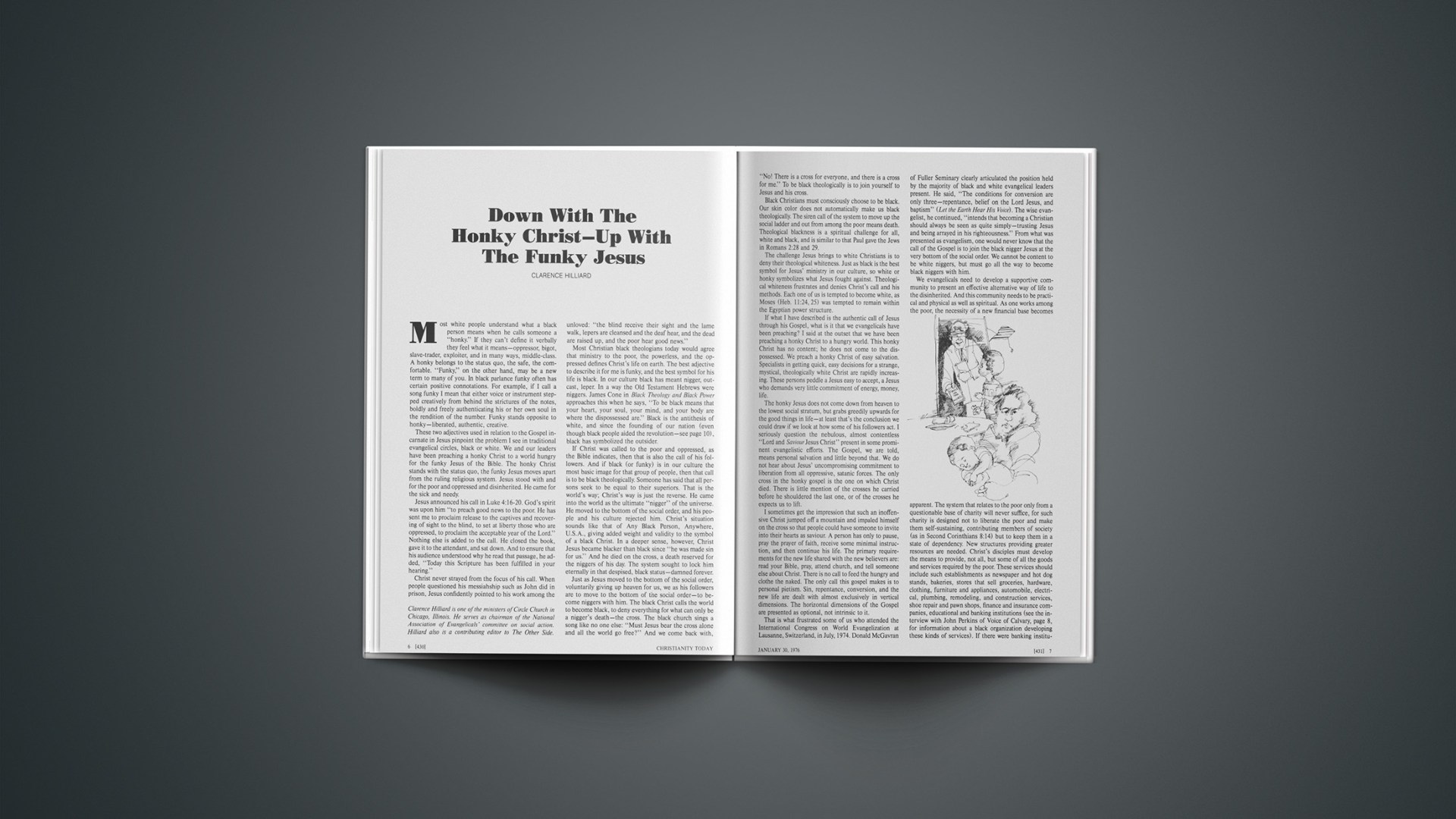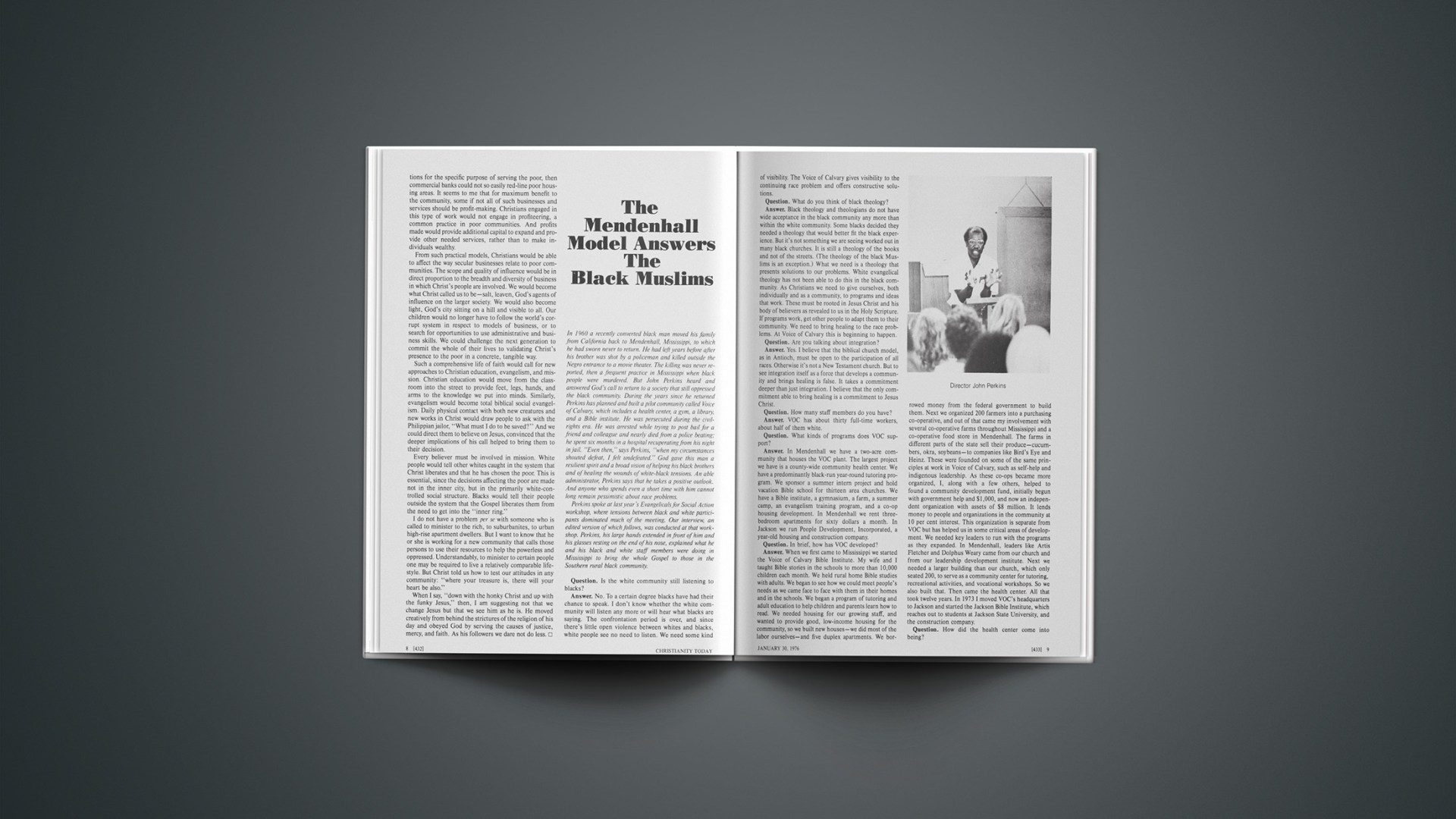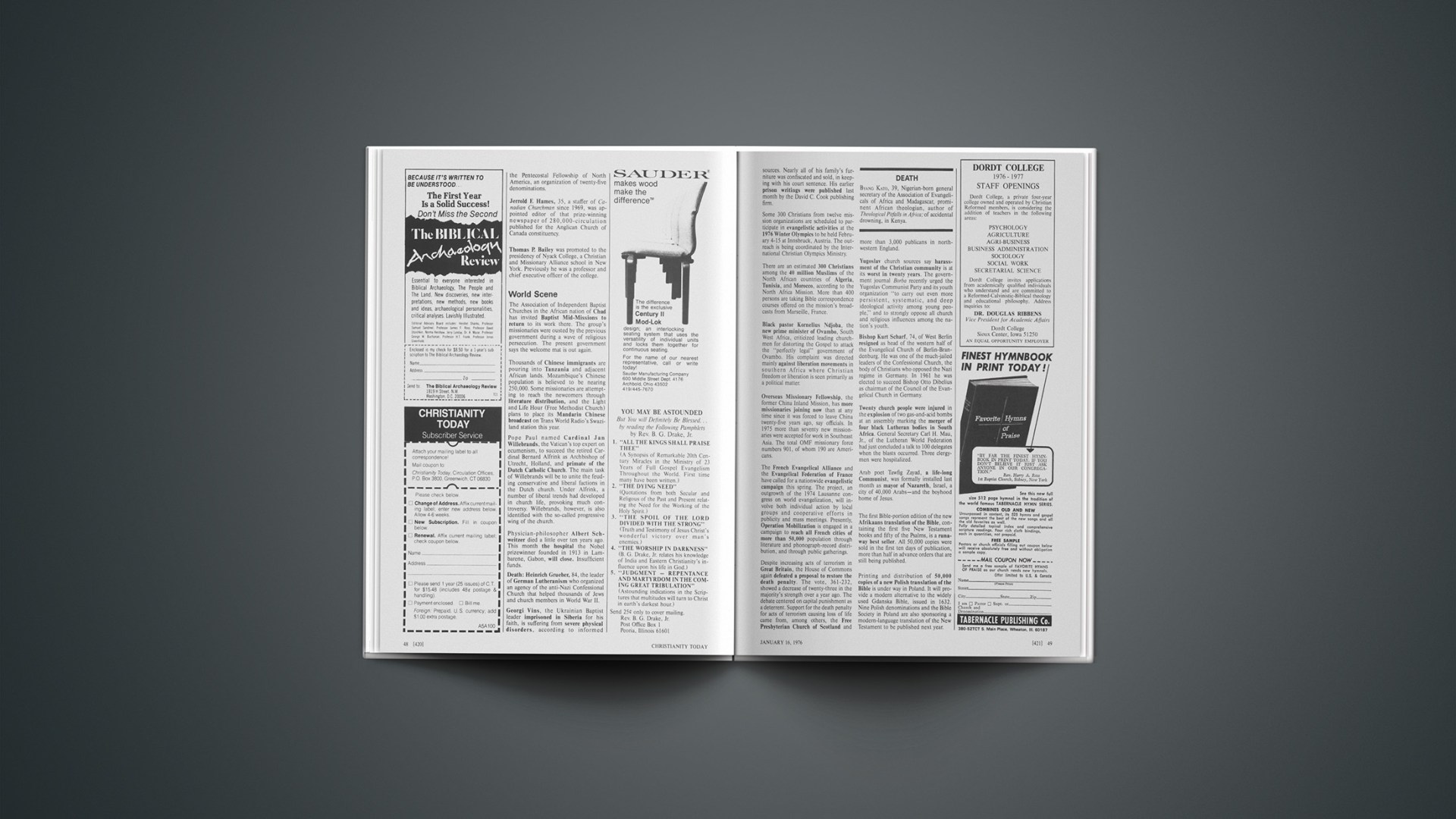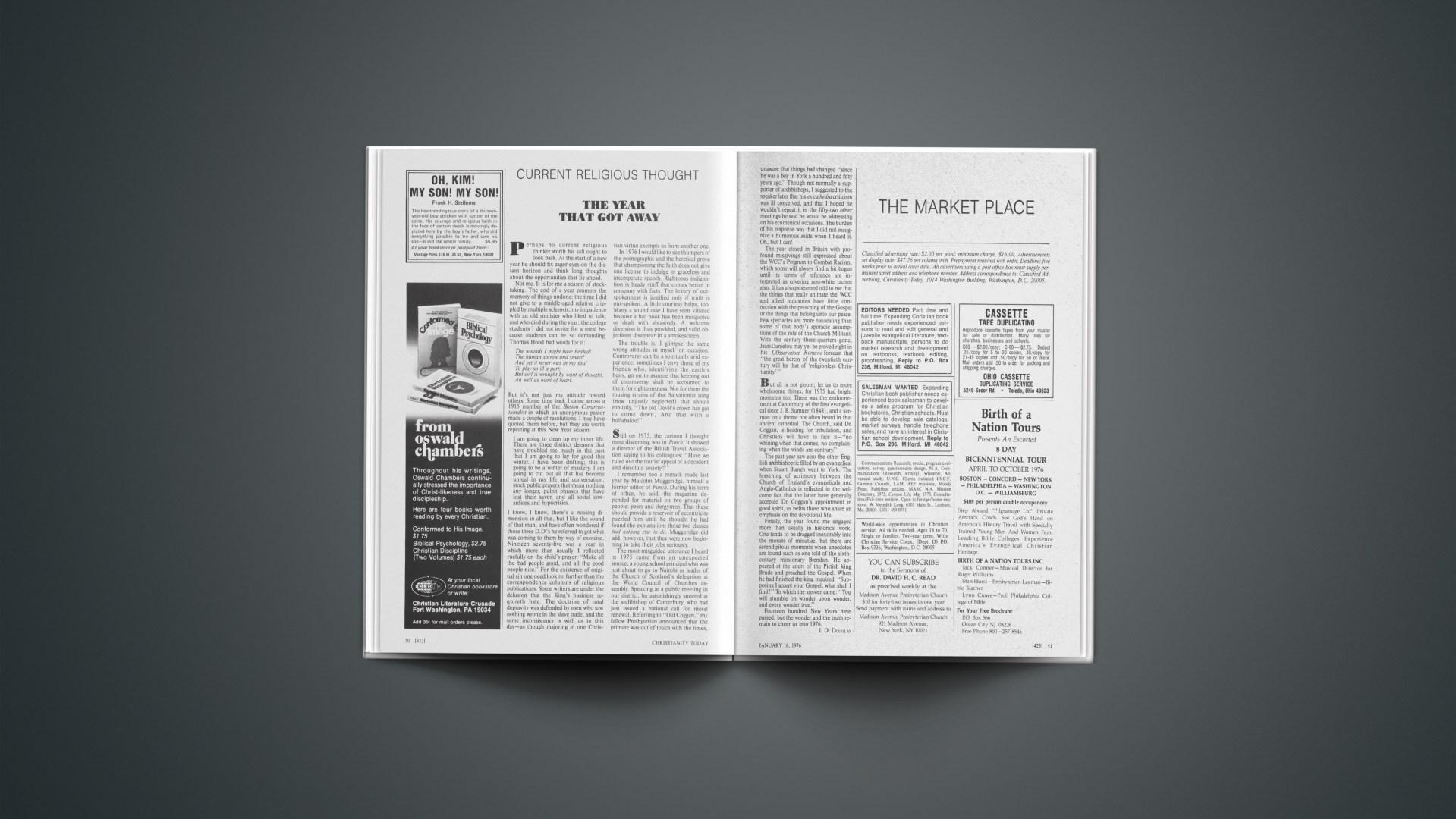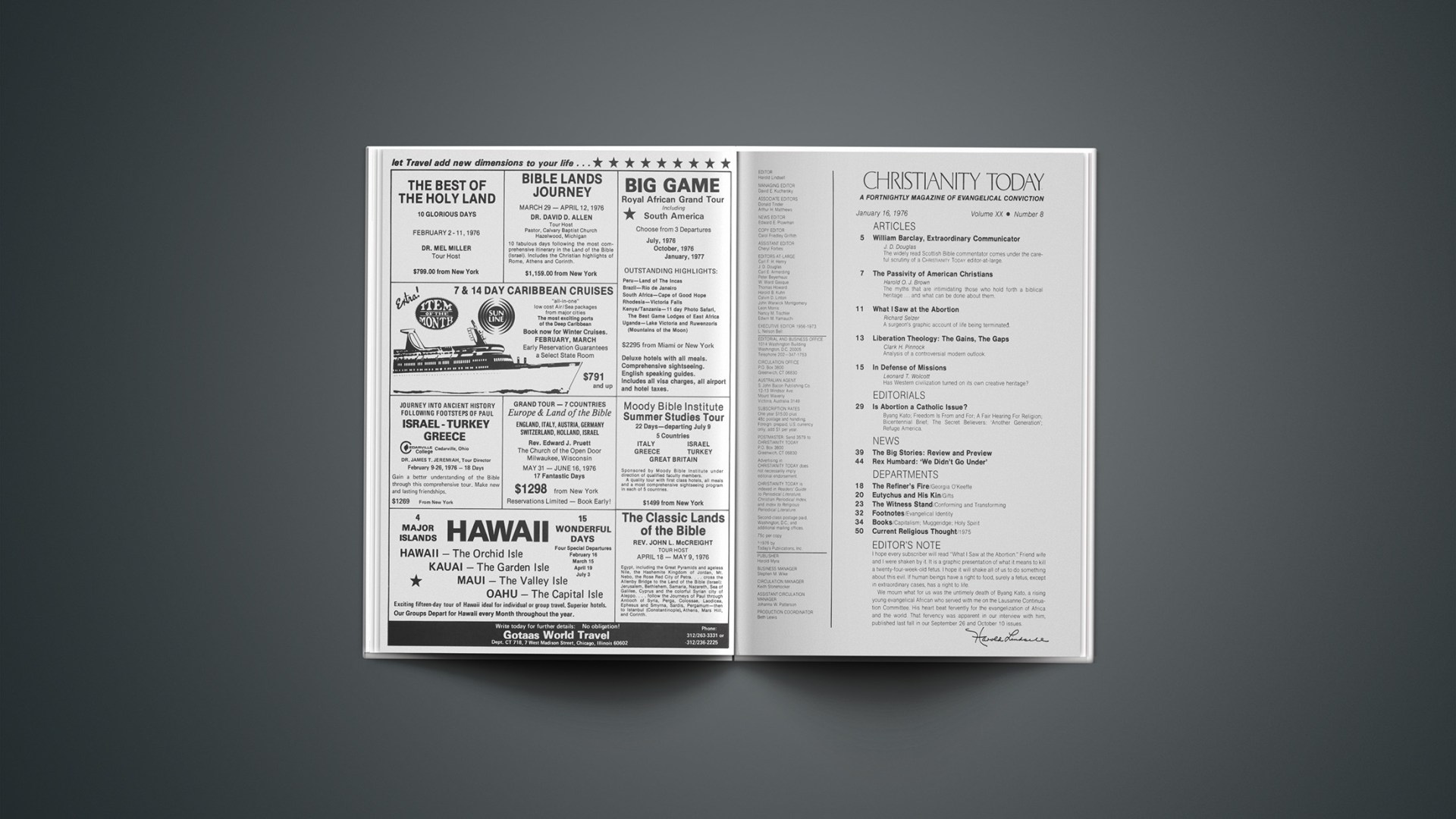No other people in the world give as much to voluntary agencies, such as churches, as do citizens of the United States. The record is remarkable, and it is envied by the leaders of private causes in many other countries. This has been so from the earliest days of the nation. One of Alexis de Tocqueville’s best-known observations about early America was that its people “are forever forming associations.” Americans continue to support those associations generously, and some experts estimate that they contributed over $50 billion to private causes last year.
While the nation can point with gratitude to this record, danger signals have arisen. The Commission on Private Philanthropy and Public Needs hoisted some of these in a recently released report. John H. Filer, commission chairman, described as “alarming” the discovery that giving by individuals, as a proportion of personal income, has dropped 15 per cent in the last decade.
Churches and missionary societies are definitely feeling the pinch; they realize that something is happening to stifle the generosity of Americans. Belt-tightening is the general rule. Churches and broadly based missionary groups that have been able to maintain programs at the level of a few years ago are the exception, not the rule. Most have had to cut their programs back because of the declining purchasing power of the dollar even if their total income has remained steady. And many are getting fewer of those deflated dollars.
Many private and church-related organizations have in the past received substantial gifts of supplies and equipment as well as hard cash. The total value of these gifts too has been dwindling. An example is the contributions of pharmaceuticals to mission hospitals. Drug manufacturers were put at a disadvantage in this kind of giving when Congress passed the 1969 tax-reform law. They can no longer deduct the fair-market value of these contributions from their tax returns, and mission hospitals have suffered as a result.
Dire warnings continue to be heard that the government may soon decide no contributions are tax-deductible. If this happens, it will dry up many sources of charitable giving. Whether the churches would suffer as much initially as would colleges, hospitals, community agencies, and other private groups is debatable, but they would certainly be affected.
While we cannot endorse all the recommendations of the Filer Commission, we commend this group of American leaders for making the study, and for asking questions that need to be raised at this point in the nation’s life. People all across the country who are concerned about the support of their churches, schools, hospitals, and other private helping organizations should read the report.
As Americans reconsider these matters, they should ask again why they have been the world leaders in voluntary action. They should take a fresh look at the accomplishments of all the private organizations operating at national, state, and local levels. They should consider what would happen if all of these were to go out of business overnight. They should estimate how much it would cost governmental, tax-supported agencies to hire people to do the work that millions are now doing voluntarily.
The freedom to invest in causes close to one’s interests is an element in America’s strength. Americans who have supported the multitude of private causes have done so because of their personal interest in them. Take away the element of personal concern and interest and the contribution is often lost. And the people who have given money and materials have often given time and energy as well.
In the Church, experience shows that the giver who is personally acquainted with a cause and who prays for it regularly will give more. Moreover, the Christian who believes he is responsible to God for his stewardship should make it a point to know where his offerings go after they leave the collection plate.
When the tax-writing committees of Congress and other responsible leaders consider the Filer Commission’s recommendations, we hope the incentives to individuals to give generously will be strengthened instead of weakened. America has much to lose if these incentives are taken away. There are always objections, of course, that any tax deduction for religious rather than purely social contributions is a subsidy of religion by government. But there is little reason to claim that church-state separation has been breached on these grounds as long as the citizen is perfectly free to give to any religious group or to no group at all.
The United States can emerge from this Bicentennial year a greater, more benevolent nation if the government takes steps to encourage the support of voluntary organizations. It will suffer if the only solutions to national problems adopted in this two-hundredth anniversary year are those involving government action with tax dollars.
Persecution That Perseveres
Times have seldom been easy for evangelical Christians in Eastern Europe. The “happy” times of history have usually been those when there has been a slight let up in repression. The anniversary of one such bright spot in Hungarian Christianity will be observed next month, and it is an event that deserves the attention of modern Christians.
Twenty-three Protestant pastors and three teachers knelt on the deck of a Dutch ship in Naples harbor on February 11, 1676, after being freed from their chains. These Hungarian believers were all that were left of a group of about 400 leaders condemned to death over ten months earlier by King Leopold. The young ruler and his mentors decided that instead of killing the Protestants they would torture them, force them to march to Naples, and then sell them to be galley slaves.
The end of the survivors’ captivity was signaled by the arrival of the Dutch fleet under the command of Admiral Michael A. De Ruyter. Entering the harbor with full sail, his ships formed a semi-circle with guns facing the city and the Spanish galleys on which the pastors and teachers were enslaved. The Dutch naval hero demanded freedom for the men, and their chains were loosed. They joined in singing Psalms 46; 114, and 125 before they left the slave ships. When they were safely aboard a Dutch vessel they knelt to praise God in the words of Psalm 116. Their deliverance was an answer to their prayers and the appeals of evangelical leaders in several nations.
Admiral De Ruyter refused their thanks. He had been at sea fifty-eight years and had many victories to his credit. He told the Hungarians: “We are only instruments; give all the glory to God.… Of all my victories not one has caused me so much joy.” It was his crowning achievement; ten weeks later he was dead.
The pastors and teachers were unable to return home immediately, but the Hungarian king was beginning to feel the pressure of an aroused public opinion in Western Europe. The English and German rulers, as well as the Dutch, brought diplomatic pressure to bear. The Protestants were finally allowed to go home, but with restrictions.
Religious persecution is still a fact of life 300 years later in many parts of the world. Lamentably, little seems to have been learned from history. Organized ecumenicity, as represented in the World Council of Churches, has difficulty speaking a consistent word on behalf of oppressed believers in the last quarter of the twentieth century.
Excellence For The Prime
The so-called family hour, which runs from seven to nine each evening on commercial television, has been with us for half a season. It is the industry’s attempt to answer consumer pleas for less sex and violence on television. But the programs produced for this time-slot have been dismal, sterile and dull.
The failure of “Beacon Hill,” a spin-off of the award-winning public TV series “Upstairs, Downstairs” (a British import now in its third and, regrettably, final season), may have been due in part to the non-prime hour at which it had to be aired. “Beacon Hill” was the most ambitious night-time commercial TV venture to date. The acting was taut, the script was well-written, and the plot frequently dealt with serious, if not philosophical, questions. But they were questions the network considered inappropriate for “family” viewing.
The family-hour concept is artificial and ineffective, a shallow concession to consumers. Children can view more explicit sex and violence on soap operas any afternoon of the week than on programs after nine in the evening. Even the talk/news programs can give offense. Maureen and John Dean on a recent “Good Morning America” interview discussed the value of living together before marriage; Mrs. Dean gave advice on how a woman can get a man to marry her if he’s already living with her. Parts of the interview were then rerun on evening news programs. If that is the sort of programming to which people object, pressing the off-button appears to be the only solution.
Serious or “adult” subjects can be treated without salaciousness, as in the recent “George Sand” series on public TV’s “Masterpiece Theatre.” The immoral lives of nineteenth-century French artists were presented tastefully, and the ill results of such living were shown without apology.
The television industry has not found the key to good prime-time programming. It should take a close look at its far less flush but far more stylish neighbor. If artistic and moral excellence were the goals for commercial television as they are for its public counterpart, much of the problem would be solved.
Believers: In Good Hands
The biblical account of Hagar and Ishmael is a touching one. A young woman and her teen-age child are sent off with bread and a skin filled with water to perish in the wilderness. Abraham did this at the behest of Sarah, his wife, who had given birth to Isaac, the son of promise and the heir of his father. Sarah was jealous of Abraham’s son by Hagar, an Egyptian slave woman.
When the water was gone, Hagar put her son under a bush so she would not have to see him die. The lad wept aloud, and we are told that “God heard the voice of the child.” The angel of the Lord came to Hagar with the promise that Ishmael would become the father of a great nation. He also told her, “Hold him fast with your hand.” There is something beautiful in the scene: bereft of material resources but in response to God’s command, Hagar takes her son’s hand and holds it firmly. Reassurance must have filled his heart.
Many of us can remember a parent who held us by the hand at some troubling junction point of life. What strength came to us by that simple act! Hope rose in our hearts, and life suddenly seemed safe again. Is that not a true picture of God for the Christian today? All who belong to God by faith are held in the hollow of his hand.
Christians who have any doubts about this can lean heavily on the testimony of Jesus. He had told his disciples that he is the shepherd of the sheep and that the shepherd died to give life to the sheep. But some doubted whether he was really the Christ. They asked him, and his response was this: “My sheep hear my voice … and I give them eternal life … and no one shall snatch them out of my hand.” And then he added: “No one is able to snatch them out of the Father’s hand. I and the Father are one.”
Safe in the hands of Jesus and the Father! No one can snatch us out of their hands. There we are certain of provision for this life and for the life to come. We need not fear tomorrow, for all our tomorrows are in their hands also. And when those earthly tomorrows come to an end, we shall cross the river that separates time from eternity, still in good hands.

